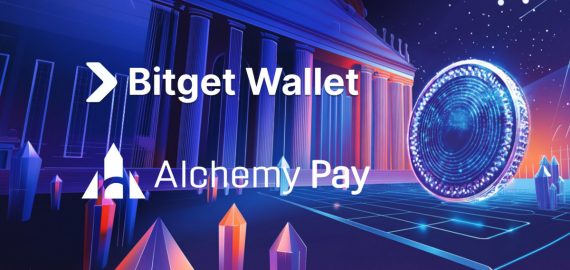Bridging 150+ Chains: Router Protocol’s Ambitious Mainnet Debut Promises a New Era of Blockchain Interoperability


In Brief
Router Protocol, a cross-chain infrastructure platform, has announced the launch of its mainnet and the integration of Bitcoin on Router Chain.

Router Protocol, a cross-chain infrastructure platform, has recently announced two major developments in its ecosystem. Among them are the upcoming launch of its mainnet and the integration of Bitcoin on Router Chain.
Router On the Way to Interoperability
On July 30, 2024, the Router Chain mainnet is scheduled to be launched with the aim of enhancing blockchain interoperability. Chain abstraction is made possible by Router Chain’s superior layer-1 architecture. Its objective is to link over 150 L1/L2/L3 chains, Rollups, non-EVMs, and EVMs in order to promote more cooperation and integration within the decentralized ecosystem.
The CEO of Router Protocol, Ramani Ramachandran, expressed his excitement at the introduction, saying that it is an important milestone toward their goal of creating a landscape of chain abstraction that is genuinely linked. He spoke with enthusiasm about the platform’s potential influence on the industry and complimented the team’s diligent work in delivering a solution that meets the pressing demand for chain abstraction.
What are the Main Features of Router Chain?
Router Chain has a number of important characteristics that we want to share with you. It secures the permissionless PoS network with $ROUTE, which guarantees secure asset transfers between various blockchains. Additionally, the platform offers an extensible security layer that lets developers incorporate bespoke security features like rate-limiting or waiting periods. With this feature, apps may continue to have the best possible security in a range of situations.
Since Router Chain is designed for fast throughput, it can manage a great amount of transactions without sacrificing efficiency. Major blockchain networks like Osmosis, Solana, and Bitcoin are all easily integrated with it, and additional integrations are in the pipeline. Additionally, the platform’s user-friendly design makes it accessible to end users and also for developers.
Developer’s “Heaven” with Router’s Security Features
The security elements of Router Protocol are available to developers in a variety of ways. On Router Chain contracts, they may apply customized security features like operation validation and authentication checks. ASMs, or additional security modules, can be used to safeguard transactions using features like rate-limiting and waiting periods.
The platform facilitates safe data transfers and asset trades using secure interactions with ASMs across several blockchains. On Router Chain, developers can also easily integrate compliance features like audit trails and KYC checks. Also, security parameters for high-volume dApps may be dynamically changed to improve protection against attacks without sacrificing speed.
Nitro, the current liquidity bridge for the Router Protocol, has already handled more than $475 million in volume and drawn more than 350,000 users. Many Layer-1 networks have launched or are in the midst of implementing their canonical bridges on Router Chain, such as Arthera, Saakuru, and Kyoto.
This integration demonstrates the platform’s strong network options and emphasizes the smooth transition to Router Chain’s CCIF architecture, which includes intent adapters for Lido, Stakestone, and Lynex. Notably, Router’s StakeStone adaptor to Scroll has handled more than $10 million in volume.
The freshly revised tokenomics of the protocol enable Router Protocol to concentrate on ecosystem growth, community involvement, and the promotion of novel cross-chain primitives that will completely reshape the interoperability environment.
Bitcoin Integration on Nitro Testnet
In the testnet phase, Router Protocol is incorporating Bitcoin capabilities on its Nitro bridge in tandem with the mainnet launch. The possibility to transfer Bitcoin across compatible blockchain networks with ease meets a crucial demand for cross-chain liquidity.
High-speed transactions are made possible by the Nitro testnet’s Bitcoin Integration feature as well. It guarantees lightning-fast swap execution with little latency and the best possible user experience. It is also affordable and available to users of all sizes due to its minimal pricing. With plans to add more in the future, the integration provides extensive support and connects to key ledger systems, including Ethereum, Binance Smart Chain, and Polygon.
About Router Protocol
A leading cross-chain infrastructure technology called Router Protocol uses Chain-Abstraction to provide smooth communication across blockchain networks. Its main product, Router Chain, offers decentralized applications and a safe and effective Chain-Abstraction framework to take use of cross-chain features.
Disclaimer
In line with the Trust Project guidelines, please note that the information provided on this page is not intended to be and should not be interpreted as legal, tax, investment, financial, or any other form of advice. It is important to only invest what you can afford to lose and to seek independent financial advice if you have any doubts. For further information, we suggest referring to the terms and conditions as well as the help and support pages provided by the issuer or advertiser. MetaversePost is committed to accurate, unbiased reporting, but market conditions are subject to change without notice.
About The Author
Victoria is a writer on a variety of technology topics including Web3.0, AI and cryptocurrencies. Her extensive experience allows her to write insightful articles for the wider audience.
More articles

Victoria is a writer on a variety of technology topics including Web3.0, AI and cryptocurrencies. Her extensive experience allows her to write insightful articles for the wider audience.

















































